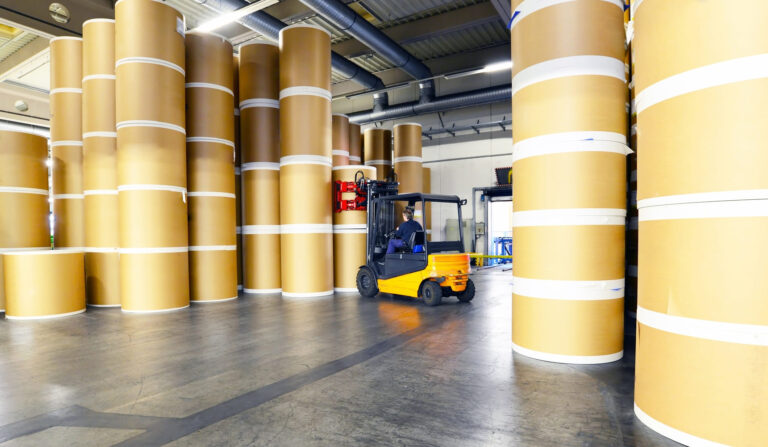4PL Logistics: The Ultimate Guide to Fourth-Party Logistics

In today’s fast-paced, globalized supply chain landscape, businesses need more than just logistics execution—they need strategic supply chain optimization. That’s where Fourth-Party Logistics (4PL) comes in.
Unlike traditional 3PL (Third-Party Logistics). which focuses on specific functions like warehousing or transportation, a 4PL provider acts as a single integrator, managing the entire supply chain while leveraging advanced technology, data analytics, and a network of 3PL partners.
What is 4PL (Fourth-Party Logistics)?
A 4PL provider is a strategic supply chain orchestrator that oversees end-to-end logistics operations, including:
1. Managing multiple 3PLs (warehousing, freight, last-mile delivery)
2. Integrating advanced technology (AI, IoT, real-time tracking)
3. Optimizing costs & efficiency through data-driven decisions
4. Providing risk management & compliance
4PL vs. 3PL: What’s the Difference?
| Feature | 3PL (Third-Party Logistics) | 4PL (Fourth-Party Logistics) |
| Scope | Executes specific logistics tasks | Manages the entire supply chain |
| Role | Tactical (e.g., warehousing, shipping) | Strategic oversight & optimization |
| Vendor Management | Works directly with shippers | Coordinates multiple 3PLs & carriers |
| Technology | Basic WMS & TMS | AI, predictive analytics, automation |
| Customization | Limited to logistics services | Tailored end-to-end solutions |
While 3PL logistics focuses on task execution, 4PL logistics provides a comprehensive strategy for supply chain management and optimization.
How the 4PL Process Works
A Fourth-Party Logistics provider acts as the central orchestrator for a merchant’s supply chain, handling coordination across multiple logistics partners, including 3PLs. Here’s a step-by-step breakdown of how a 4PL logistics provider typically operates in collaboration with an eCommerce business:
1. Coordinating Transportation
The 4PL initiates the movement of goods, arranging transportation from the manufacturer to strategically chosen warehouses. These warehouses are often managed by third-party logistics providers who take over physical handling of products.
2. Managing Storage and Fulfillment
Once products arrive at the warehouse, the 3PL partner handles essential tasks like receiving stock, organizing inventory, picking items for orders, packing shipments, and preparing them for dispatch. The 4PL oversees this entire process to ensure efficiency and consistency.
3. Overseeing Inventory
Using integrated software solutions, the 4PL consolidates inventory data across all locations. This provides the merchant with a unified dashboard to track inventory levels, movement, and stock availability across the supply chain in real time.
4. Handling Order Delivery
For the final leg, the 4PL supervises delivery operations by coordinating with carriers or leveraging the 3PL’s shipping network. This ensures timely and accurate delivery to end customers, closing the loop in the fulfillment process.
5 Key Benefits of 4PL Logistics
1. End-to-End Supply Chain Visibility
A 4PL provider integrates data from all logistics partners, offering real-time tracking, predictive analytics, and performance insights. This eliminates blind spots and improves decision-making.
2. Cost Savings & Efficiency
By consolidating shipments, optimizing routes, and streamlining operations, fourth-party logistics (4PL) providers can help businesses achieve significant cost reductions. For example, a study found that switching to a 4PL model led to logistics cost savings of approximately 25% in the first month alone.
3. Access to Cutting-Edge Technology
4PLs invest in AI-driven demand forecasting, IoT sensors, and blockchain for secure transactions—tools most businesses can’t afford independently.
4. Scalability & Flexibility
Whether expanding into new markets or handling seasonal demand spikes, a 4PL adjusts logistics networks dynamically without requiring internal restructuring.
5. Risk Mitigation & Compliance
From supply chain disruptions to regulatory changes, 4PLs proactively manage risks through contingency planning and compliance expertise.
Real-World 4PL Success Stories
To illustrate the impact of 4PL logistics, let’s explore some real-world examples of companies that have successfully implemented this model:
Automotive Industry
In the automotive industry, supply chain complexity is a significant challenge. A leading car manufacturer partnered with a 4PL provider to manage its entire logistics network, from supplier coordination to distribution. This partnership resulted in reduced lead times, lower transportation costs, and improved inventory management, ultimately enhancing customer satisfaction.
Retail Sector
A major retail chain implemented 4PL logistics services to streamline its supply chain operations. By outsourcing logistics management to a 4th party logistics provider, the retailer achieved better demand forecasting, optimized warehouse management, and faster delivery times. As a result, the company experienced increased sales and improved customer loyalty.
Healthcare Industry
The healthcare industry faces unique logistical challenges due to strict regulatory requirements and the need for timely delivery of medical supplies. A healthcare provider partnered with a 4PL logistics company to manage its supply chain, ensuring compliance and efficient distribution of medical products.
How to Choose the Right 4PL Provider
1. Industry Expertise
Does the provider have experience in your sector (e.g., retail, pharma, automotive)?
2. Technology Stack
Do they offer AI, IoT, blockchain, and real-time analytics?
3. Global vs. Regional Coverage
If you operate internationally, ensure they have a strong global logistics network.
4. Scalability
Can they scale operations up or down based on demand fluctuations?
5. Transparency & Communication
Look for real-time reporting dashboards and a dedicated account manager.
Final Verdict: Is 4PL Right for Your Business?
✔ Best for: Companies with complex, multi-vendor supply chains needing strategic optimization.
✔ Not ideal for: Small businesses with simple logistics needs (3PL may suffice).
FAQ 4PL
What is the difference between 1PL, 2PL, 3PL, and 4PL services?
1PL: The company handles all its own logistics, including transportation and warehousing, internally.
2PL: A service provider is hired to handle specific logistics tasks, such as transportation of goods.
3PL: An external provider manages multiple logistics functions, including transportation, warehousing, and inventory management.
4PL: A logistics integrator oversees and coordinates the entire supply chain, including managing 3PLs and optimizing logistics processes.
Freight Logistics: “3PL versus 4PL – how to decide which is more suitable?”
Choosing between 3PL and 4PL logistics depends on your company’s logistics needs: 3PL is ideal if you require specific services like transportation, warehousing, and inventory management, and want to outsource those tasks while maintaining control over strategy. On the other hand, 4PL is more suitable for businesses with complex, end-to-end supply chain needs, as it offers comprehensive supply chain management, integrating multiple 3PL providers and optimizing logistics operations. If your focus is on handling day-to-day logistics operations, 3PL is a good fit, while 4PL is better for companies looking for a strategic, integrated approach to their entire supply chain.
Is a distributor a 3PL or a 4PL?
A distributor is typically considered a 3PL because they handle specific logistics functions such as warehousing, inventory management, and shipping products to retailers or customers. However, if a distributor also takes on the role of overseeing and optimizing the entire supply chain, including managing multiple 3PLs and providing strategic planning, they could be seen as operating in a 4PL capacity.
You may be interested in

Optimized Paper Warehousing: Storage, Handling, and Logistics Solutions
The paper industry depends on efficient warehousing to ensure the seamless movement of products from manufacturers to distributors and retailers. Whether storing raw materials like wood pulp or finished products such as paper rolls and packaging materials, proper storage is crucial for maintaining quality, integrity, and availability. This blog explores key aspects of paper warehousing, […]

Best Practices for Warehouse Receiving Processes
In this article, we’ll discuss the best practices for optimizing your warehouse receiving processes. Whether you’re looking to improve accuracy, speed, or communication, these strategies will help you achieve your goals. What is the warehouse receiving? The warehouse receiving process is a critical first step in both inventory management and ecommerce fulfillment. It encompasses everything […]

Warehouse for Small Business: Top Fulfillment Services for Startups & Growing Brands
For small businesses, managing inventory and shipping orders efficiently is critical to scaling growth. Yet, leasing a warehouse or handling fulfillment in-house can strain resources. This is where partnering with a warehouse for small business or leveraging order fulfillment services for small business becomes a game-changer. In this guide, we’ll explore the best solutions for […]